- Home
- Succulents
- Bowiea
- Bowiea volubilis
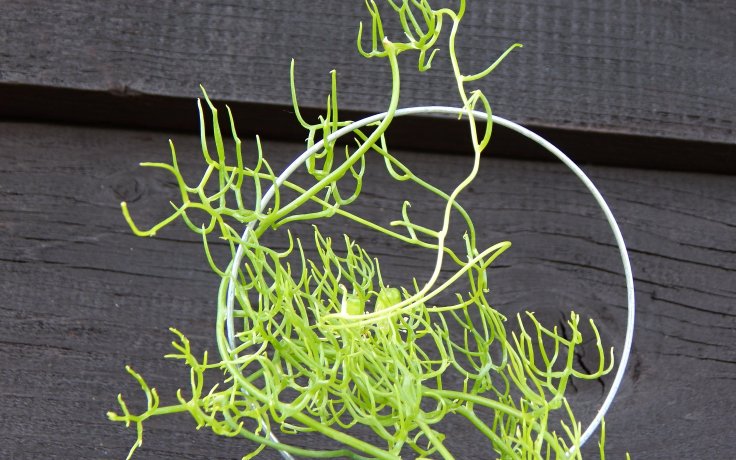
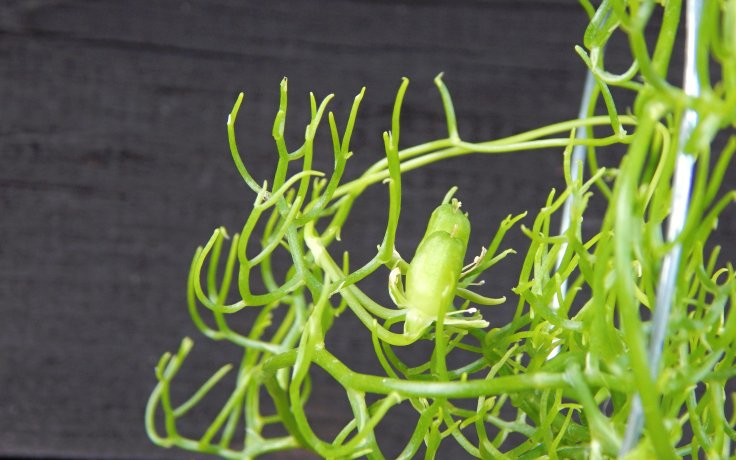
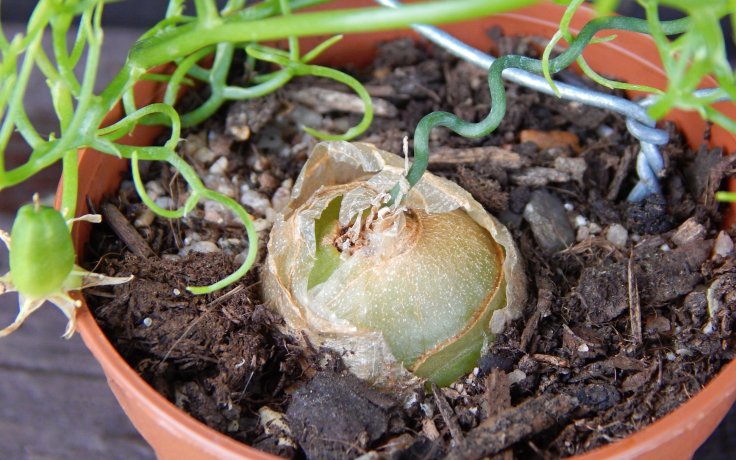
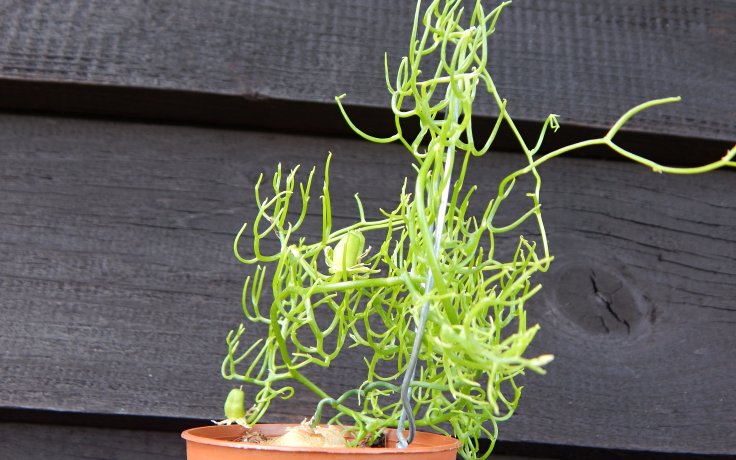
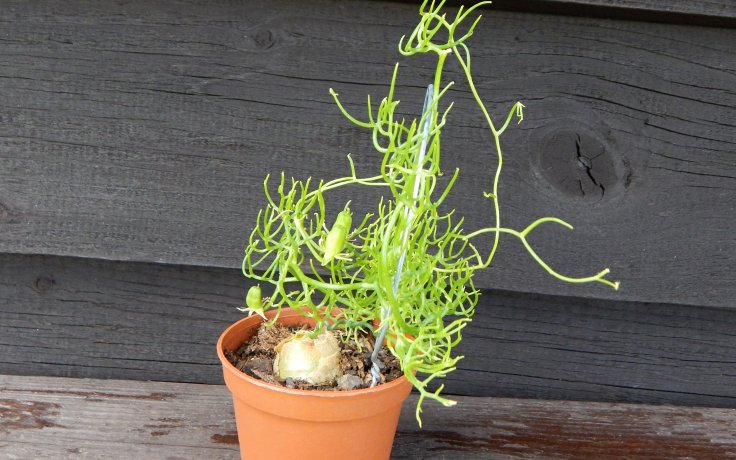
Bowiea volubilis
Succulent likes a sheltered location.
Water lightly during the growing season (spring to autumn) and leave the plant completely dry over winter.
It can tolerate -1.1 °C in the short term. The plant is not hardy.
The plant is dormant during the winter. During this period, it lacks its bizarre shoots, which only come out again in early spring.
Bowiea volubilis, also known as Climbing Onion, Sea Onion or Climbing Potato, is a succulent plant with an unusual appearance and life cycle. It is found over a wide area from southern Africa to Tanzania. It can also be found under the names Ophiobostryx volubilis or Schizobasopsis volubilis.
The bulb, which is the heart of the plant, is partially above the surface of the substrate. It may be covered with several layers of thin skin. In spring, regardless of weather and watering, a fresh green shoot emerges from the tip of the bulb between the layers of husks. The shoots, bizarrely twisted and tangled together, are a lush green colour and grow vigorously and quickly. They turn yellow and wither as autumn sets in, signalling to the grower to cut back on watering. The onions then go into a long winter dormancy. Once dry, it is advisable to cut off the dead shoots.
The inconspicuous greenish flowers that appear on the leafless shoots form fruits. The shiny black seeds can then be ejected from the fruit into the surrounding area.
The succulent grows very quickly and vigorously. Bowiea volubilis is an unpretentious and hardy plant. It can survive long periods of drought (reportedly 2-3 years) without harm. Its climbing growth and unpretentiousness make it ideal for hanging containers.